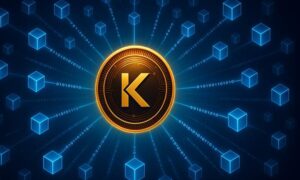The blockchain industry is evolving at an unprecedented pace, with platforms like TON and Lightchain AI ($LCAI) driving innovation in decentralized technology. Lightchain AI, in particular, has captured attention with its revolutionary approach of merging artificial intelligence and blockchain to address scalability, transparency, and efficiency challenges. Plus, the Lightchain AI Presale is now live, offering an exciting opportunity to get involved early.
TON (The Open Network), on the other hand, has built a robust and versatile blockchain ecosystem, focusing on enhancing scalability and driving user adoption. This article takes a closer look at TON’s established framework and compares it to Lightchain AI’s cutting-edge features to explore how these platforms are shaping the future of blockchain technology.
An Overview of TON: The Open Network
Originally developed by Telegram, TON has evolved into an independent blockchain ecosystem. Its focus lies on creating a fast, user-friendly platform that enables seamless adoption for decentralized applications (dApps) and blockchain-based tools. Key features of TON include:
1. Sharding Technology
TON’s advanced sharding architecture divides its blockchain into smaller segments, allowing for parallel processing of transactions. This ensures high throughput and scalability.
2. Comprehensive Ecosystem
TON has expanded beyond its original goals to include wallets, decentralized exchanges, and NFT marketplaces. This broad ecosystem aims to cater to both developers and end-users.
3. Community and Adoption
With Telegram’s massive user base as a springboard, TON has gained rapid traction among developers and investors. The platform focuses on simplifying blockchain integration, making it accessible to a broader audience.
An Introduction to Lightchain AI ($LCAI)
Lightchain AI introduces a unique approach to blockchain innovation by integrating artificial intelligence into its core functionalities. It emphasizes solving challenges related to data processing, scalability, and transparency. Some of Lightchain AI’s standout features include:
1. Proof of Intelligence (PoI)
This consensus mechanism rewards nodes for performing valuable AI computations, replacing traditional energy-intensive mining or staking.
2. Artificial Intelligence Virtual Machine (AIVM)
AIVM allows developers to deploy AI-driven dApps seamlessly, enabling advanced applications such as real-time analytics, adaptive DeFi tools, and dynamic NFTs.
3. Privacy and Sustainability
Lightchain AI prioritizes data privacy and sustainability by focusing on energy-efficient operations and decentralized governance.
TON vs. Lightchain AI: Core Comparisons
1. Scalability
- TON: The sharding mechanism ensures high throughput, making it a strong choice for applications requiring massive transaction processing.
- Lightchain AI: With PoI and adaptive scalability, Lightchain AI optimizes resources for AI-driven computations, creating a unique edge for machine-learning-based applications.
2. Developer Ecosystem
- TON: Offers a wide range of tools and resources, including APIs, SDKs, and a thriving developer community. Its integration with Telegram has amplified its reach.
- Lightchain AI: Focuses on attracting AI and blockchain developers by providing AIVM and fostering decentralized governance. Its AI-centric approach is particularly appealing for niche applications.
3. Use Cases
- TON: Best known for dApps, DeFi, and NFT marketplaces, TON excels in providing a generalized blockchain platform for various applications.
- Lightchain AI: Targets industries like healthcare, logistics, and finance by enabling applications that require complex AI-driven functionalities.
4. Accessibility
- TON: Leverages Telegram’s massive user base to simplify onboarding for new blockchain users.
- Lightchain AI: While still growing, Lightchain AI offers a developer-centric approach with features that cater to cutting-edge AI integration.
5. Sustainability
- TON: Operates efficiently but lacks a direct focus on energy sustainability.
- Lightchain AI: PoI minimizes energy consumption by aligning computational efforts with meaningful AI tasks, making it a leader in green blockchain solutions.
Innovation and Vision: Lightchain AI vs. TON
Lightchain AI’s Vision
Lightchain AI aims to redefine the blockchain landscape by introducing decentralized intelligence. Its unique combination of AI and blockchain creates opportunities for groundbreaking applications that address real-world challenges.
- AI-Powered DeFi: Predictive models for yield optimization.
- Dynamic NFTs: Adaptive digital assets for gaming and art.
- Healthcare Solutions: AI-driven diagnostics and data privacy.
TON’s Vision
TON’s goal is to simplify blockchain adoption and expand its ecosystem to accommodate various use cases. Its strategy of leveraging Telegram’s massive audience positions it well for mainstream adoption.
- Financial Inclusion: Facilitating payments and financial services for Telegram users.
- NFT Expansion: Supporting marketplaces and tools for creators.
- Developer Tools: Continuous improvements to make dApp creation more accessible.
Can Lightchain AI Match TON’s Ecosystem Growth?
Challenges for Lightchain AI
- Community Building: TON benefits from an extensive user base and established community, while Lightchain AI must actively engage and expand its ecosystem.
- Marketing and Awareness: Competing with TON requires Lightchain AI to increase visibility and demonstrate its unique advantages to developers and enterprises.
- Ecosystem Expansion: Lightchain AI’s success will depend on its ability to foster partnerships and attract a diverse range of developers.
Opportunities for Lightchain AI
- AI Integration: Lightchain AI’s focus on AI applications sets it apart, offering capabilities that TON’s ecosystem currently lacks.
- Sustainability: PoI positions Lightchain AI as a leader in eco-friendly blockchain solutions, appealing to environmentally conscious developers and investors.
- Real-World Applications: By addressing challenges in industries like healthcare and logistics, Lightchain AI can attract enterprise-level adoption.
Why Developers Should Consider Lightchain AI
- Unique Technology: AIVM and PoI provide tools for creating cutting-edge AI applications, offering a distinct advantage over general-purpose platforms like TON.
- Early Investment Opportunities: With tokens available at $0.001125 during the presale, developers and investors can join Lightchain AI at an early stage.
- Real-World Impact: Lightchain AI’s focus on solving industry-specific challenges ensures long-term relevance and growth.
A Shared Future? Collaboration Opportunities
While TON and Lightchain AI are distinct platforms, collaboration between the two could unlock unprecedented potential:
- Shared Developer Tools: Lightchain AI’s AIVM could enhance TON’s ecosystem by enabling AI functionalities.
- Cross-Platform Integration: Bridging their technologies could create seamless experiences for users and developers.
- Sustainability Practices: TON could adopt Lightchain AI’s PoI principles to enhance its environmental impact.
Conclusion: Defining the Future of Blockchain
Both TON and Lightchain AI bring unique strengths to the blockchain industry. TON’s established ecosystem, scalability, and user-friendly design position it as a leader in general-purpose blockchain solutions. Meanwhile, Lightchain AI’s innovative AI integration, sustainability focus, and real-world applications make it a standout contender for the future.
As the blockchain space continues to evolve, platforms like TON and Lightchain AI will play pivotal roles in shaping its direction. Developers and investors should consider their unique offerings and how they align with their goals to make informed decisions.
Explore Lightchain AI Today
- Join the Lightchain AI Presale
- Discover the Whitepaper
- Follow on Twitter/X
- Join the Telegram Community

































